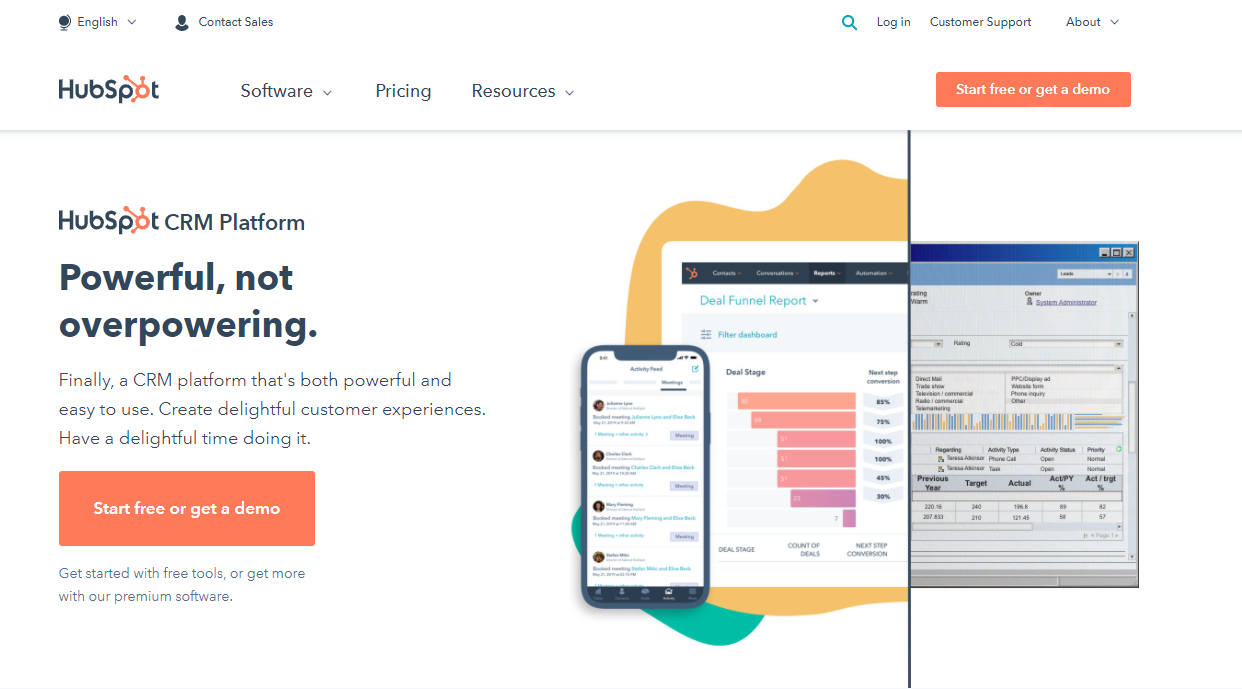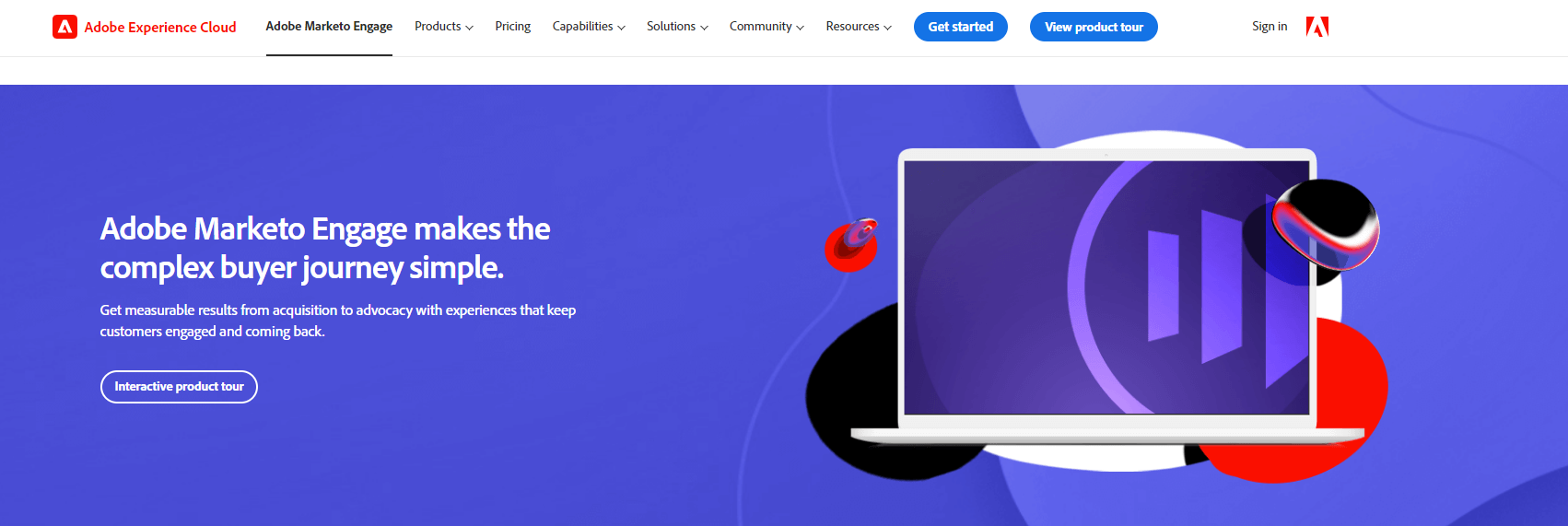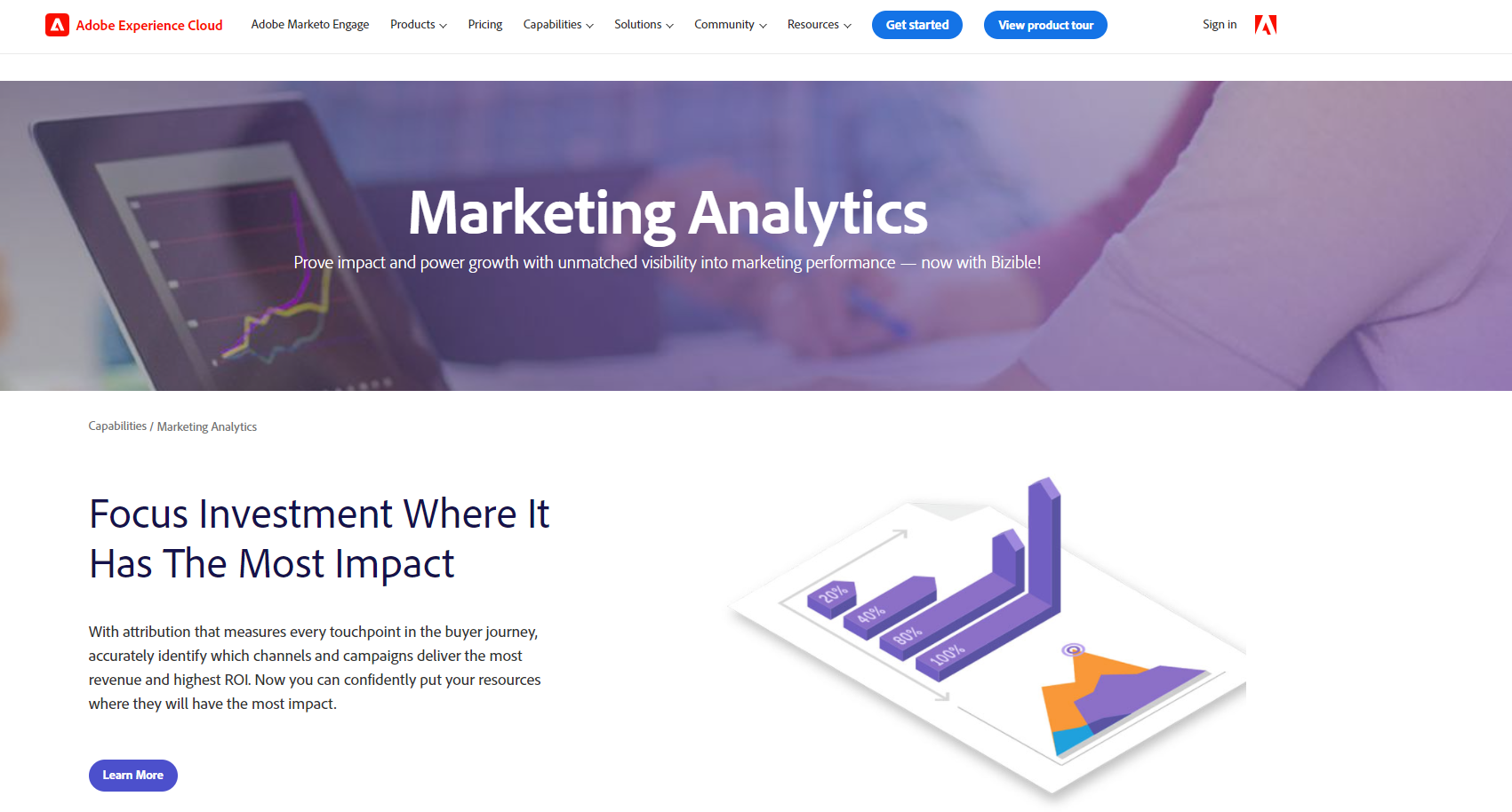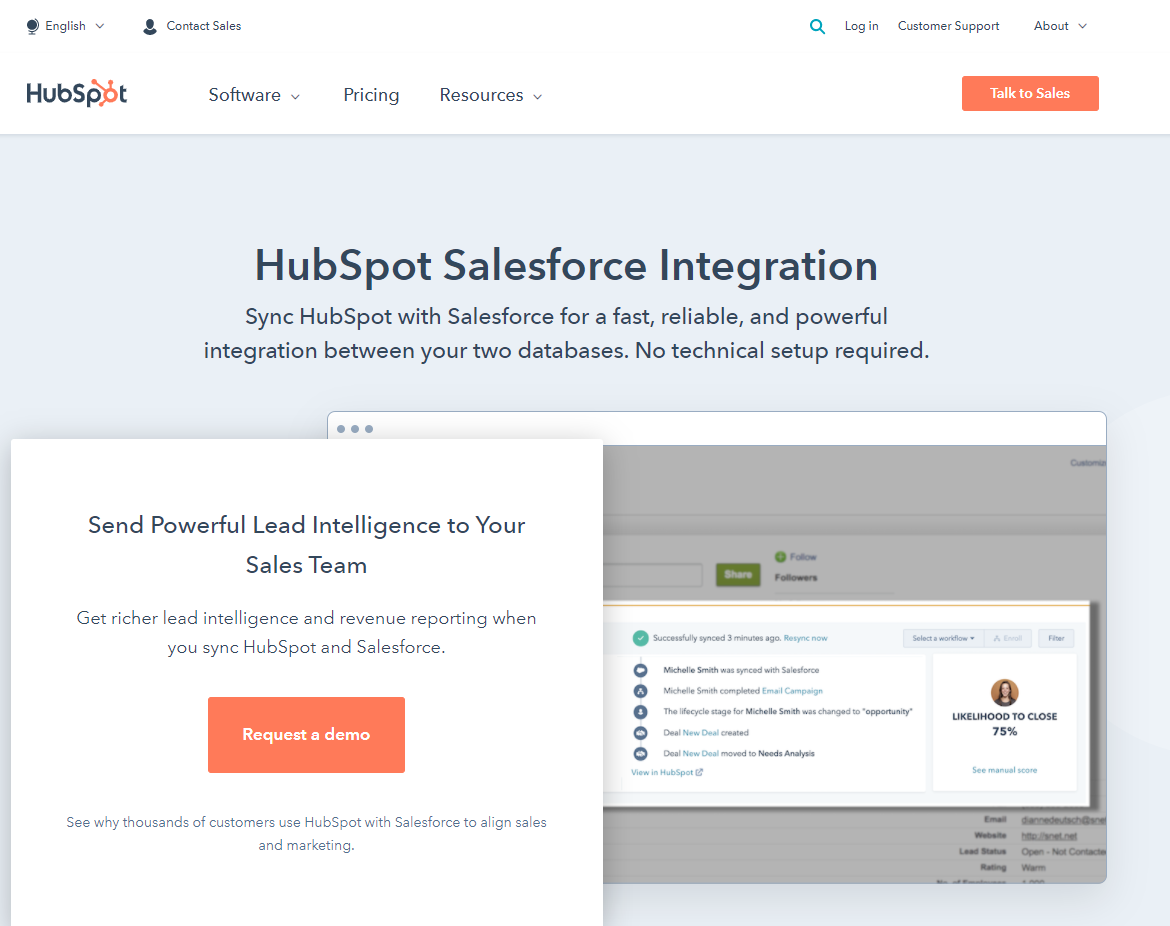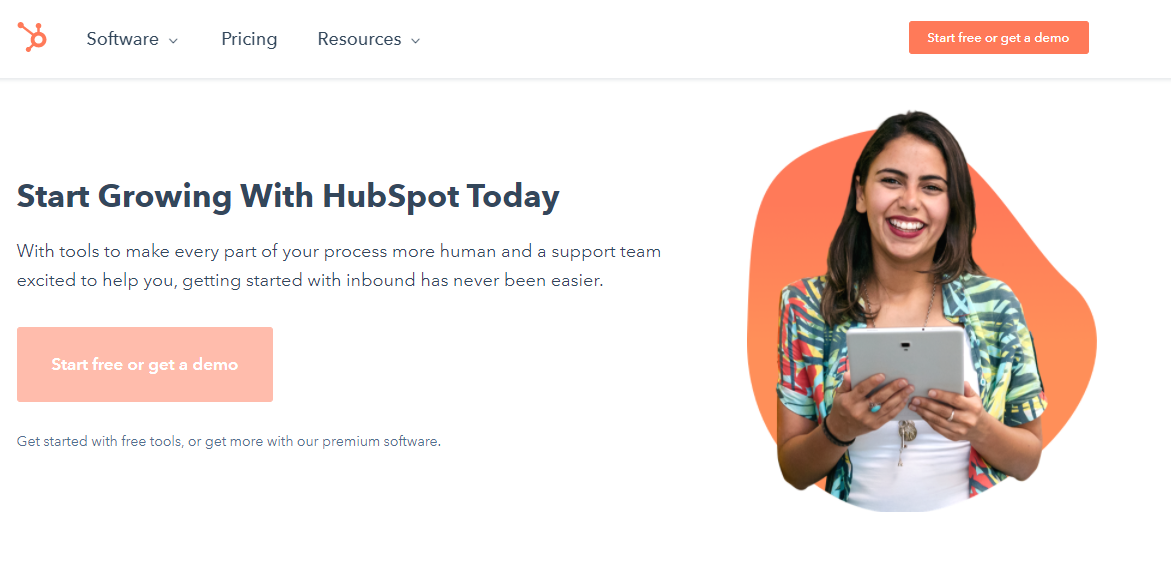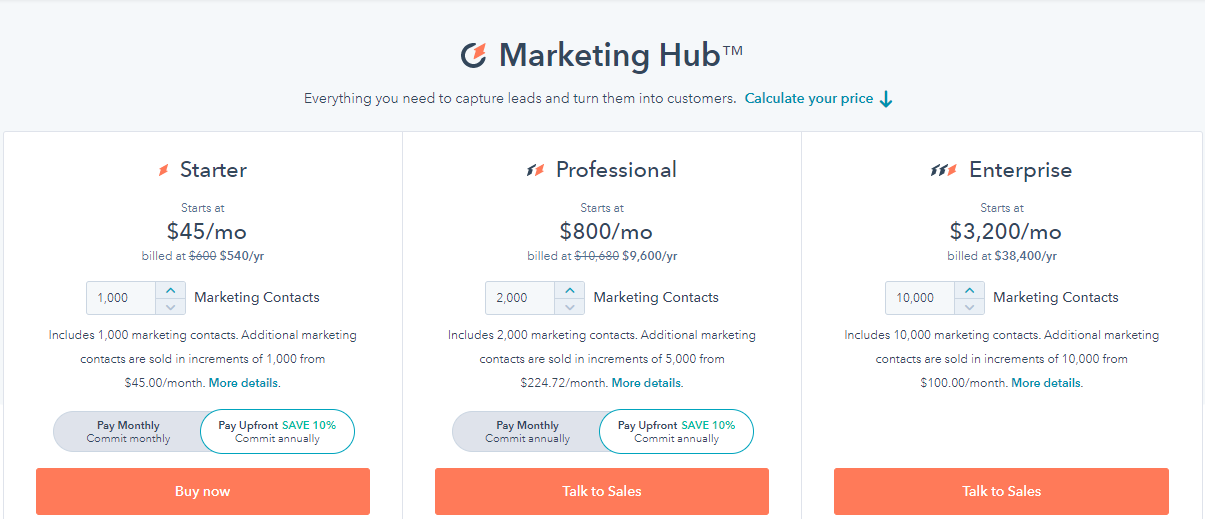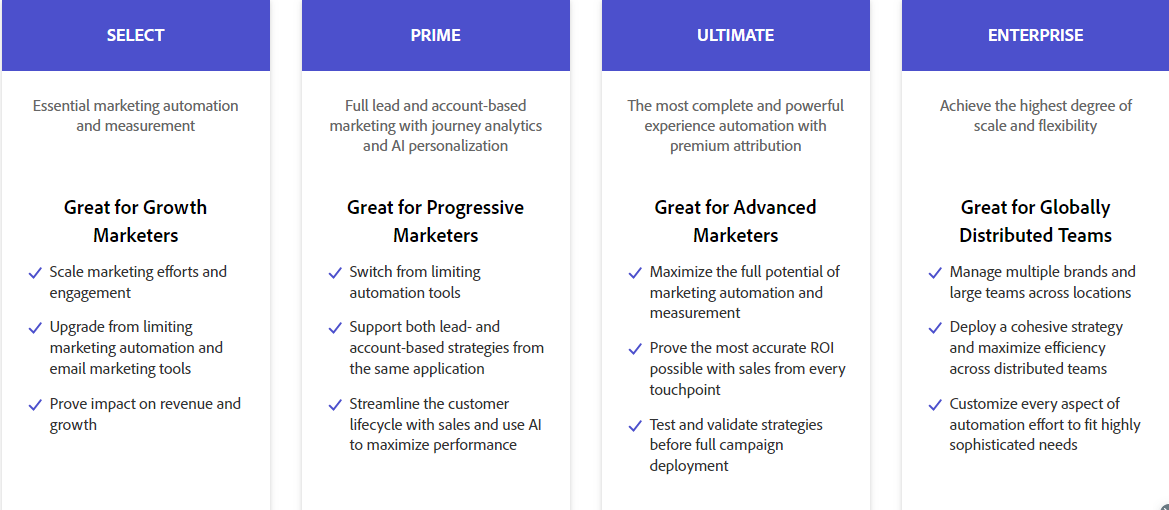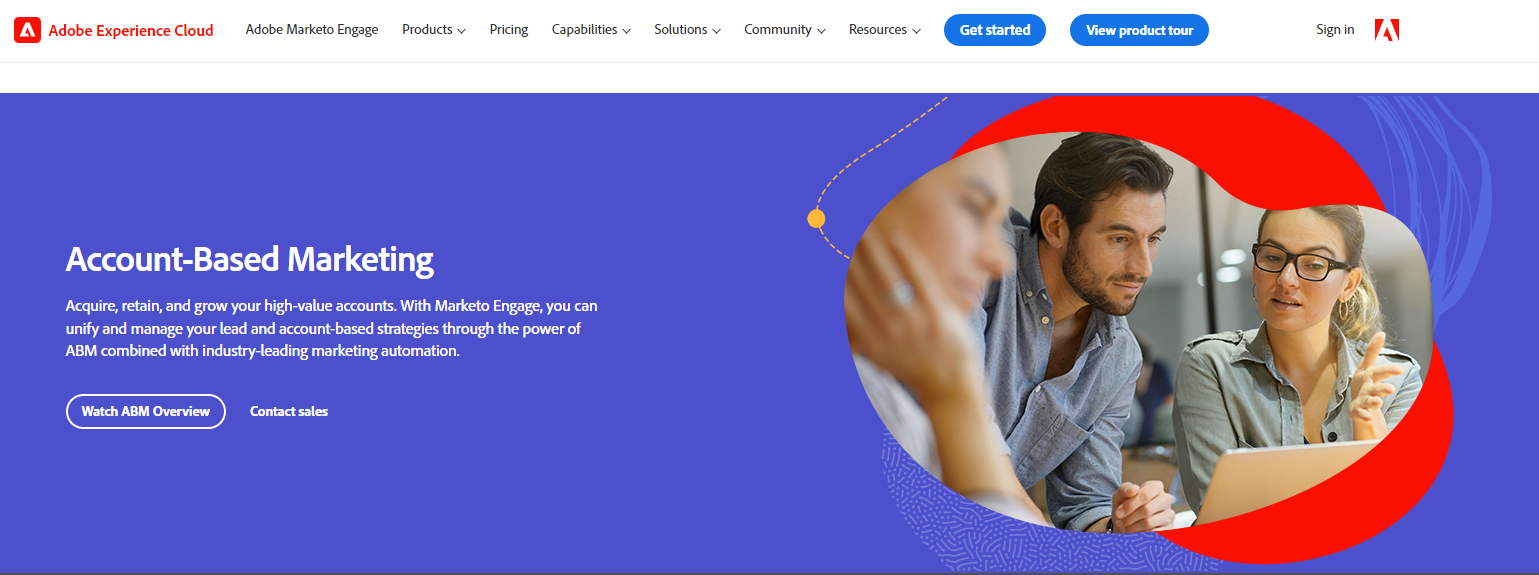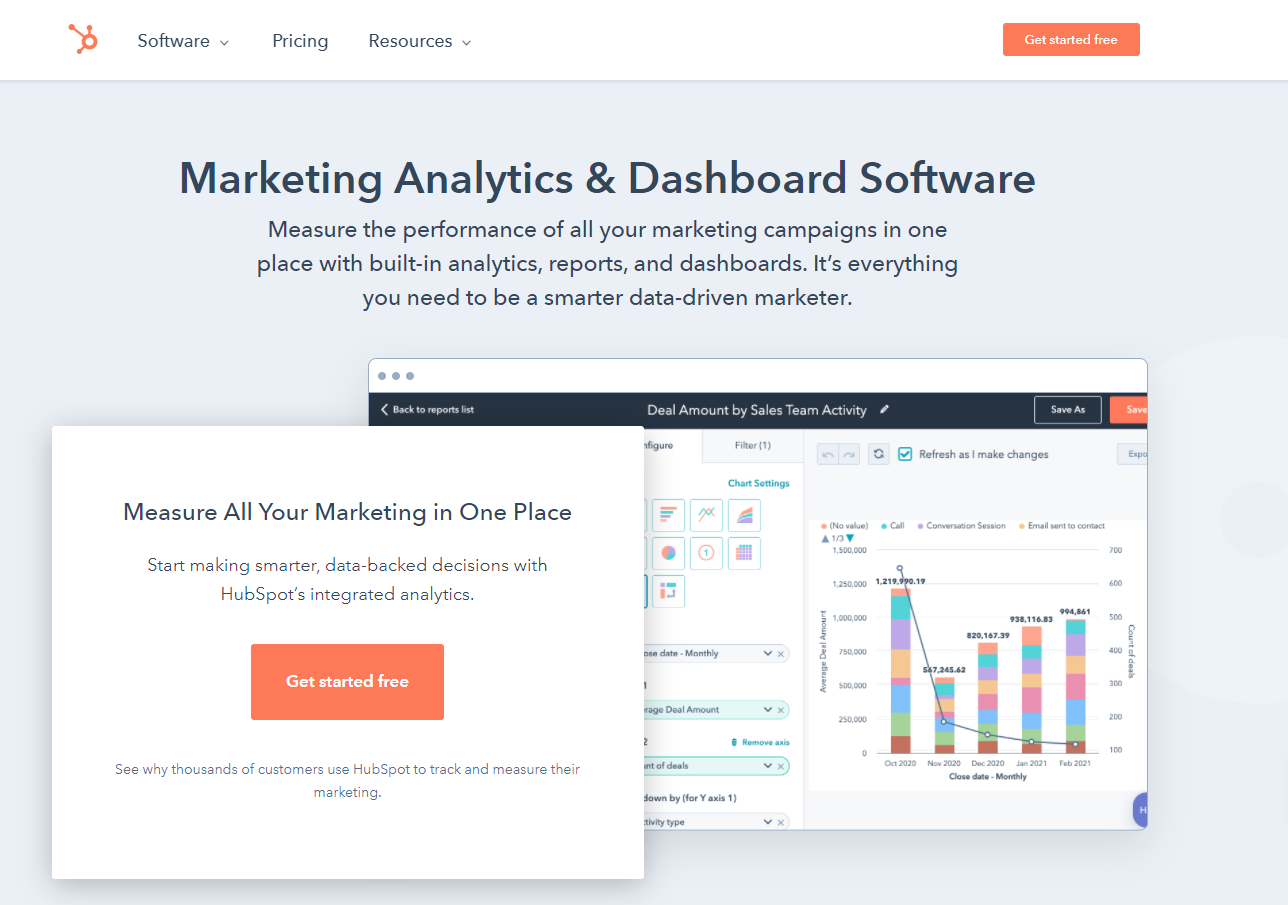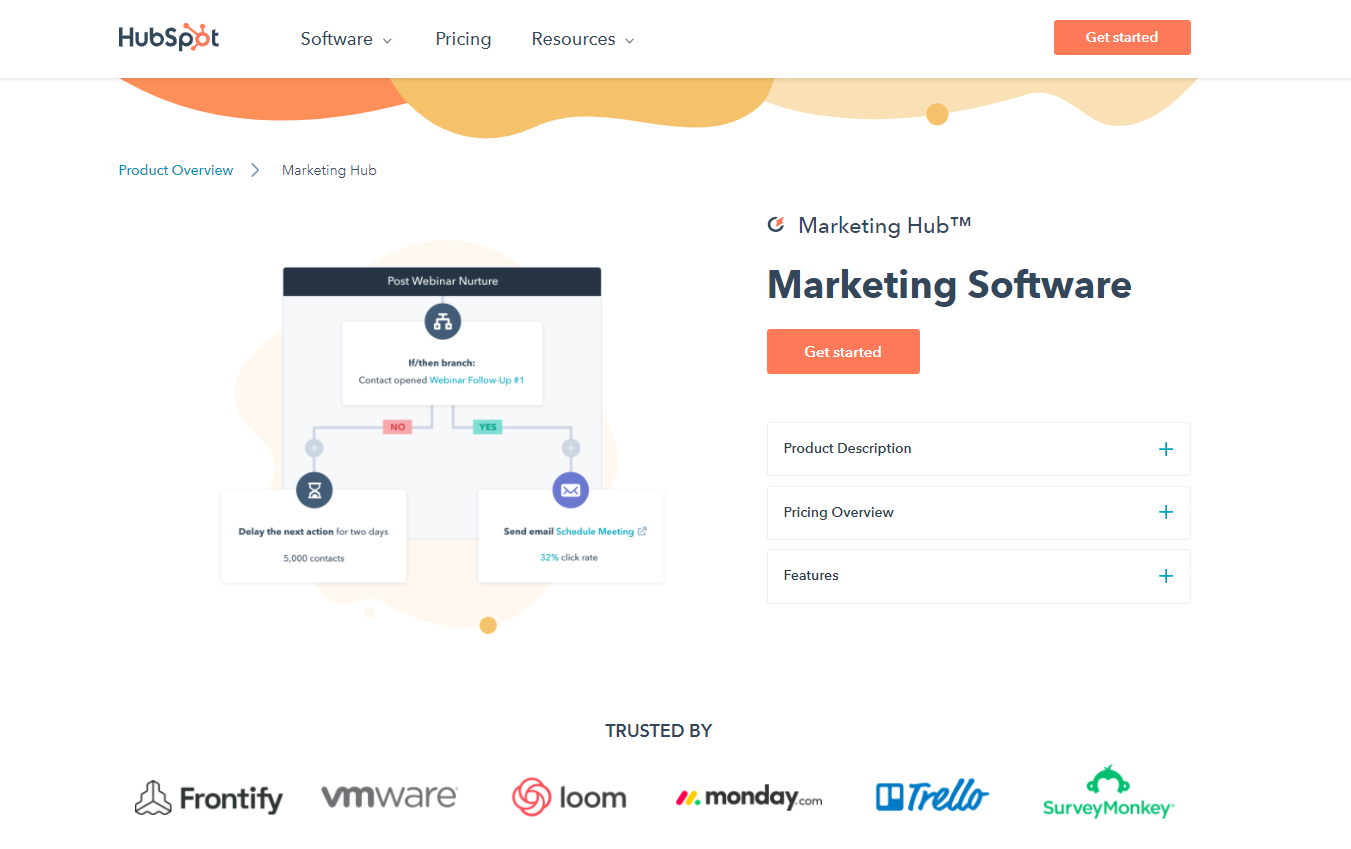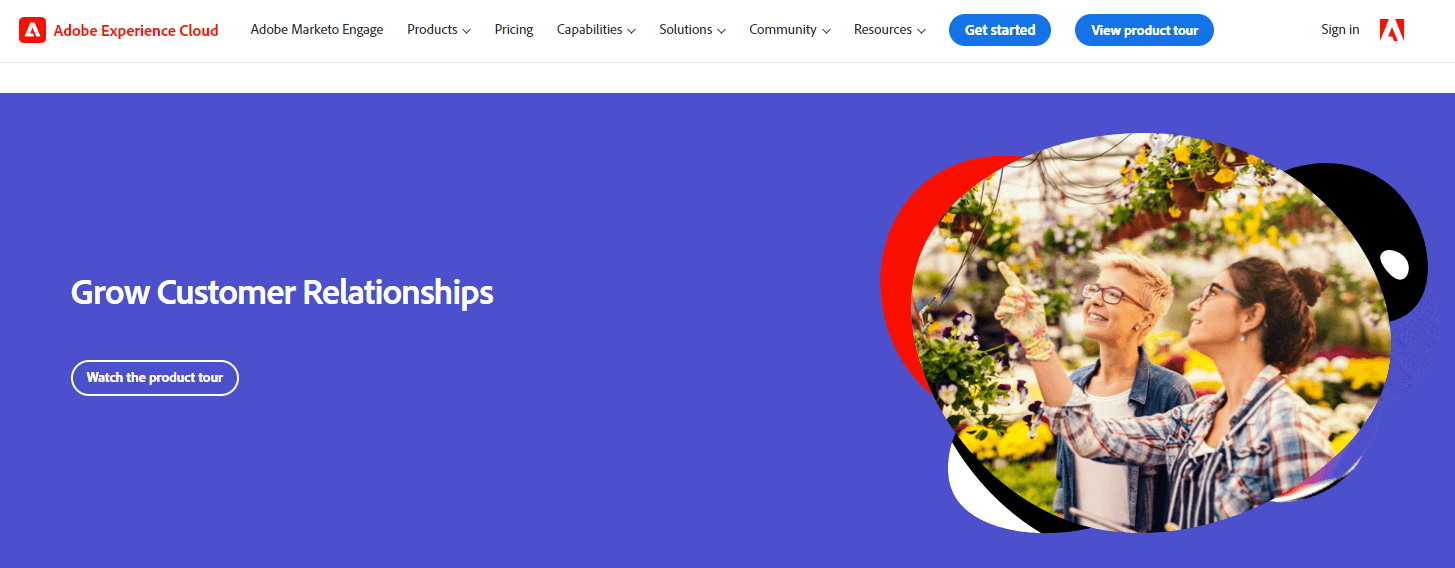Are you also confused between Hubspot vs Marketo ?
Struggling which one to choose?
If yes , then stay tuned with us to know more about Hubspot vs Marketo.
Let’s start !!!!!
Hubspot Check out
Check out
|
Marketo Check out
Check out
|
|---|---|
| $45/mo | $895/mo |
Best for creating a frictionless customer experience. |
It is used for automate and measure marketing engagement, tasks and workflows. |
|
|
|
|
|
|
|
Gives very user friendly environment and quick to learn. |
Tricky sometimes and difficult to understand for beginners. |
|
Budget-friendly. Everyone can buy it's access. |
Very costly. Not everyone can afford. |
|
Give there best to solve the problem as soon as they can. |
24*7 available. |
| Check out | Check out |
This article is all about Hubspot vs Marketo so if you are interested in this then stay tuned with us till the end.
Perhaps no battle in the world of marketing automation software is more compelling than HubSpot against Marketo.
Any sensible person would recoil in response to this question, which compares two of the most well-known marketing automation tools.
Because how could you ever compare HubSpot, the inbound marketing juggernaut, to Adobe’s beloved Marketo?
Not only do we have an intuitive comparison report (available by clicking the button below), but we’re also equipping you with this guide, prepared with love.
Hubspot vs Marketo 2025: Overview
We’ll go over all you need to know about HubSpot vs Marketo in the sections below. The explanation will undoubtedly assist you in making your decision.
What is HubSpot?
HubSpot is full-featured marketing, sales, and service platform that can improve any aspect of your organization.
However, the majority of marketing tactics take place on HubSpot’s Marketing Hub.
HubSpot’s customer relationship management (CRM) solution is tightly coupled with the Marketing Hub, ensuring that users receive the best of both worlds.
Your marketing team, customer care team, and even your sales team can collaborate to attract, engage, and delight consumers through HubSpot Marketing Hub and its integrated CRM.
Apart from integrating with your CRM, HubSpot’s marketing automation platform includes capabilities for email marketing, forms, landing pages, contact management, live chat, traffic and conversion research, and ad placement across various social media platforms.
What is Marketo?
Marketo is a widely used marketing automation system in the corporate sector. The platform’s specialties are personalization of content, lead nurturing automation, and lead management.
Marketo is a component of Adobe Experience Cloud, a collection of Adobe, Inc.’s online marketing and analytics solutions.
Email campaigns, namely email nurturing and automation, provide context for many of Marketo’s fundamental functions. Additionally, Marketo provides two essential marketing tools: Marketo Engage and Bizible.
Marketo Engage is a cloud-based tool that enables users to build, manage, and execute tailored engagement plans across various channels, including email, online, and mobile.
Bizible is a multi-touch revenue attribution tool that calculates the return on investment (ROI) of the channels used to engage users.
You’ll discover how buyers learn about your product and why they purchase it, allowing you to assess your marketing efforts’ efficacy objectively.
In summary, Marketo enables client interactions and authentic experiences to prospective leads regardless of their location.
Hubspot vs Marketo: Pricing
Marketo’s services are broken into many unique modules: marketing automation, email marketing, lead management, account-based marketing, digital advertising, social media marketing, and mobile marketing.
You may utilize these modules alone or in combination, which will affect the total cost of your purchase. The modules are priced in four tiers: Select, Prime, Ultimate, and Enterprise.
HubSpot adheres to this concept to a tee. Starter, Professional, and Enterprise are the three levels.
Along with the HubSpot Marketing Hub, there is the HubSpot Sales Hub, the HubSpot Service Hub, the HubSpot Operations Hub, and a content management system (CMS) that integrates with all of HubSpot’s services.
All of HubSpot’s services, including the Marketing Hub, are paid on an enterprise-wide basis and do not have a user cap.
A mere 1000 contacts in HubSpot Marketing Hub cost $45 per month, whereas 20,000 contacts cost around $9,072 per year when applied yearly discounts.
By comparison, Marketo’s most basic edition supports up to 25 people. Additional users need an upgrade.
And to maintain a database of 20,000 contacts, you’ll cost roughly $27,000 each year.
Between HubSpot vs. Marketo, there is no question that HubSpot is the more cheap option, making it ideal for small enterprises.
Hubspot vs Marketo: Capabilities
Consider how HubSpot and Marketo stack up against each other in some of the most crucial marketing features.
1. Unmatched Support:
From the start, HubSpot is committed to your success.
Our world-class support and customer success teams are accessible to all clients – with Pro and Enterprise customers receiving complimentary phone and email help – and you won’t pay more as your business grows.
HubSpot Academy, which is continuously regarded as one of the world’s best online learning platforms (source), is also accessible.
Marketo provides a minimum level of assistance with all subscriptions and offers additional coverage via premium options.
Nonetheless, online reviews frequently give Marketo support a lower rating than the industry standard (source).
Marketo University provides many courses to assist users in getting started, totaling several hours of information.
2. Marketing Through Accounts:
With HubSpot, you can quickly implement an ABM approach.
At no extra cost, Sales Hub and Marketing Hub Pro + Enterprise provide tools to identify target accounts, attract important clients, engage and deepen relationships, communicate across marketing and sales, and measure the efficacy of your strong ABM campaign.
A paid add-on enables Marketo’s ABM capabilities to your instance, and individuals that need access are provided individual licenses.
To synchronize Sales and Marketing, you’ll want to ensure that your different administrators work closely together on integrations and that users understand how both systems work.
3. Calculate The Return on Investment:
With HubSpot, you can see all of your statistics in one place – from top-of-funnel performance indicators to multi-touch revenue attribution.
With the ability to link every client engagement to income, you can make business-driven strategic choices.
There is no need for manual integration.
Marketo enables you to generate rich reports ranging from high-level engagement insights to revenue reporting.
The reporting does need manual configuration, which might take some time.
4. Constructing Your Growth Engine:
HubSpot includes all of the tools you need to develop your growth engine, provide an exceptional customer experience, and generate revenue for your company.
By combining HubSpot’s Marketing Automation platform, CMS, and CRM into a single, easy-to-use platform, you can unify and coordinate internal teams to report across systems, utilize data to improve customer targeting, and administer your website.
Marketo requires executives to entrust with the management of their technology stack.
Rather than democratizing access to optimize effectiveness, your future development is contingent on the technical gatekeepers’ expertise, initiative, and availability.
Connecting marketing activities to sales or service data becomes a hassle rather than a necessary function in this paradigm.
5. Marketing Powered by CRM:
With Marketing Hub, you’ll attract the appropriate consumer and expand your audience quicker; you’ll cut through the noise with targeted messages sent through the correct channel; you’ll convert attention into customers rapidly, and you’ll please customers with a seamless purchasing experience.
With HubSpot, marketers take on the role of the flywheel’s architect, connecting marketing, sales, and service.
Marketo is the market leader in marketing automation, having invested heavily in deep connections with several prominent CRM products, including Salesforce.
Additionally, it may be configured in various ways to meet your organization’s unique requirements.
However, after being bought by Adobe, the firm has made no organic additions to the CRM platform and invested in core capabilities.
6. Lead Conversion and Nurturing:
HubSpot is an all-in-one marketing platform that combines content production, email, a CRM, and automation into a single platform, allowing for easy setup without needing a single line of code.
Whether you’re producing a single email or a whole program that nurtures leads into consumers, Marketing Hub has it all.
Marketo has standard marketing automation features, such as email sending, but makes the most of them via connections with CMS, CRM, and other tools.
Most integrations will need you to write code to incorporate them into your apps, which might take some effort to set up.
7. Attractive Tools:
Through its easy and effective top-of-funnel features, HubSpot Marketing Hub succeeds at generating new prospects.
Publish your blog on HubSpot and measure activity through your CRM, including SEO suggestions, manage all your advertising campaigns, create and execute social media campaigns, host videos directly in HubSpot, or utilize our chatbots to gather and qualify leads.
Marketo is primarily used with standard email campaigns and lacks the features of a comprehensive marketing solution.
As a result, incorporating online forms, landing pages, and blogs entirely into your email campaigns may need extra tools and work.
8. Become Visible Online:
HubSpot enables teams to produce content using the tools and technology they choose with solutions for marketers and developers.
The web tools in Marketing Hub are based on the same technology as our standalone CMS Hub, making it simple for marketers to produce content rapidly, either using a library of pre-made templates or fully bespoke using a drag-and-drop editor or manual coding.
Marketo offers the ability to construct landing pages, but any customizations would almost certainly need the assistance of a developer or someone with expertise authoring HTML and CSS.
Marketo excels at contacting identified leads but lacks built-in content marketing tools.
Similarly, social media features need administration intervention and routinely garner poorer scores from users on online review sites.
9. Transformation of Marketing:
To completely revolutionize your marketing, you’ll need an integrated collection of tools that will assist you in attracting, engaging, and nurturing prospects, as well as eventually linking all of your marketing efforts to ROI.
HubSpot currently has all of these capabilities and access to a more extensive collection of tools and an extendable platform.
Marketo focuses on a small number of well-established digital marketing channels and assists customers in developing customized solutions for a limited number of use cases.
Hubspot vs Marketo: Core Features
We have some core features on Hubspot vs Marketo, Let’s go ahead.
FAQs on Hubspot vs Marketo
What can Marketo do that HubSpot can?
You may use HubSpot to develop forms, landing pages, and calls to action. By comparison, Marketo lacks a slew of conversion-related capabilities. It does, however, assist you in creating highly tailored content to target specific audiences with your marketing efforts. HubSpot, Zoho, Salesforce Pardot are some of the major competitors of Marketo.
How is Marketo different?
Marketo's unique feature is sending the email to many flights without establishing a new campaign for each time zone you want to include in the email sent.
What is Marketo called now?
Marketo's platform was formerly centered on its Engagement Platform, renamed Marketo Engage. It has been integrated into the Adobe Experience Cloud.
Quick Links:
Conclusion: Hubspot vs Marketo 2025
There are several reasons to utilize HubSpot and numerous reasons to use Marketo. Both have their own specific set of outstanding characteristics, some of which overlap and others distinctly distinguishable.
They’re meant to automate and optimize your web content to help you execute your inbound marketing tactics more successfully. Ultimately, your option will come down to the requirements of your team.
Bear in mind that it is not about how complicated the features seem. It’s about how straightforward it is to get the information you want.
The Marketing Hubs from HubSpot (mainly the Professional and Enterprise) are designed around a fantastic user experience – from the UI to the support staff to the larger ecosystem of products, services, and partnerships.
Enterprises, too, benefit from HubSpot’s simplicity of use. HubSpot works for even the most complicated use cases because of capabilities like Multi-Touch Revenue Attribution, account-based marketing, and partitioning.
Particularly given that it was constructed from the ground up. We would recommend HubSpot.

